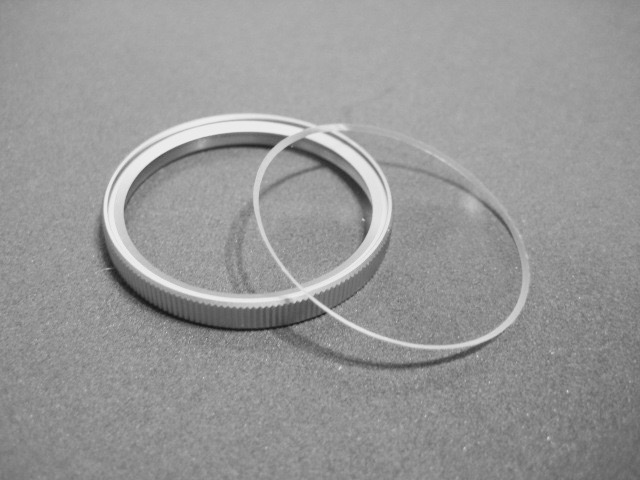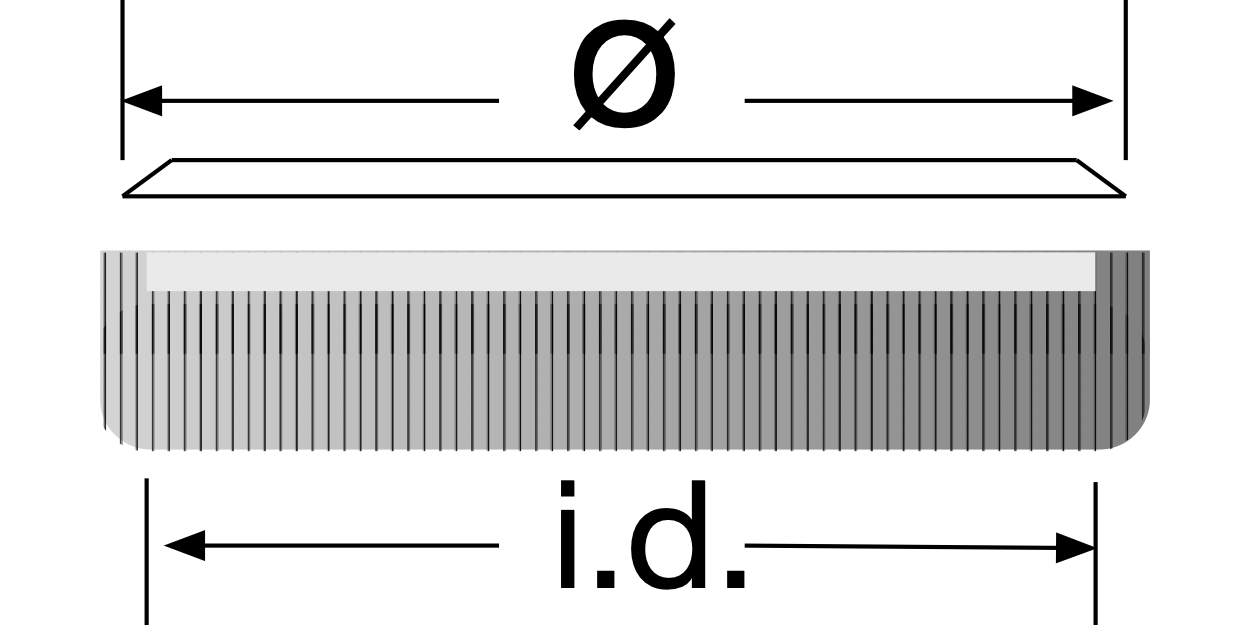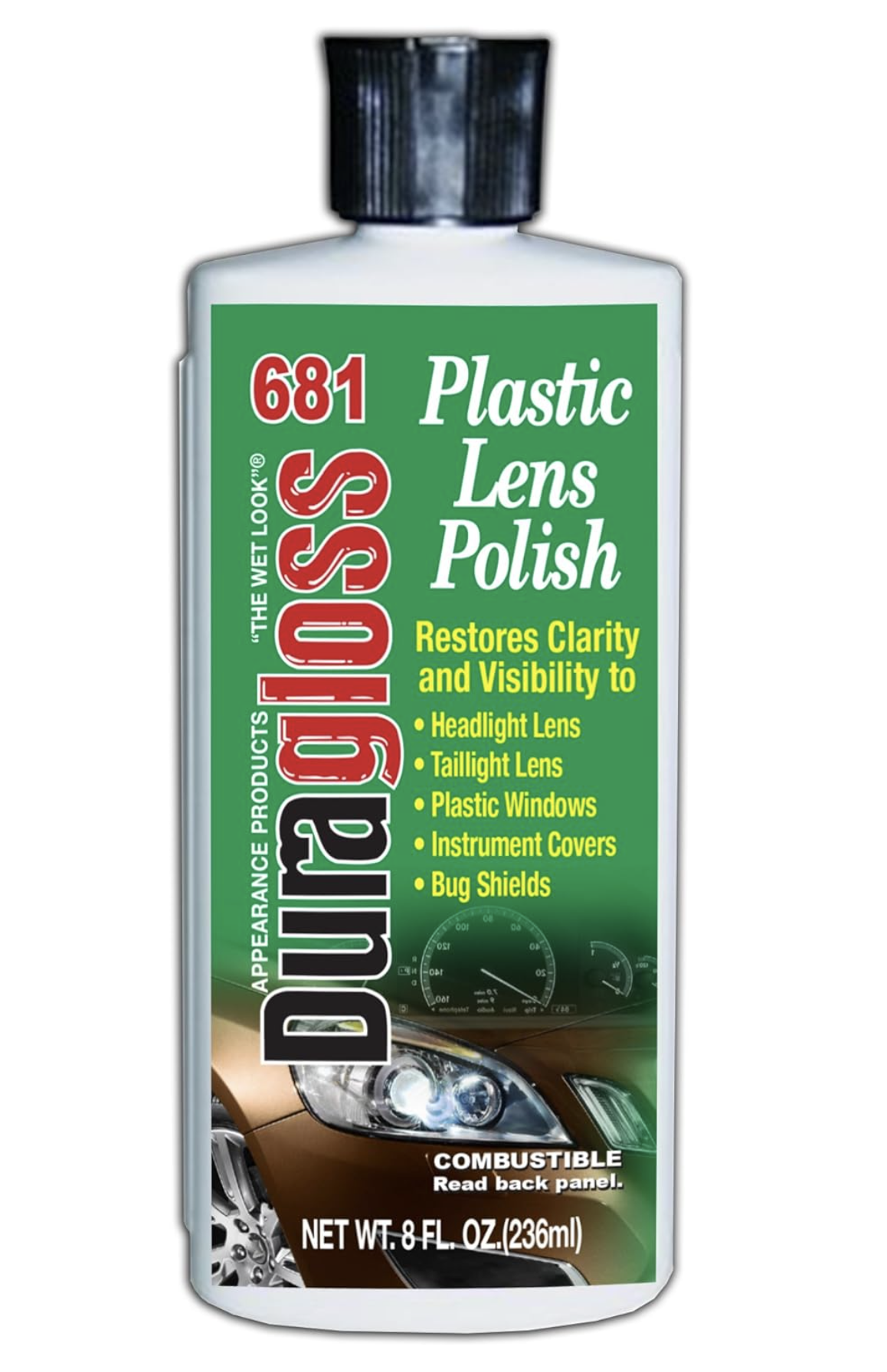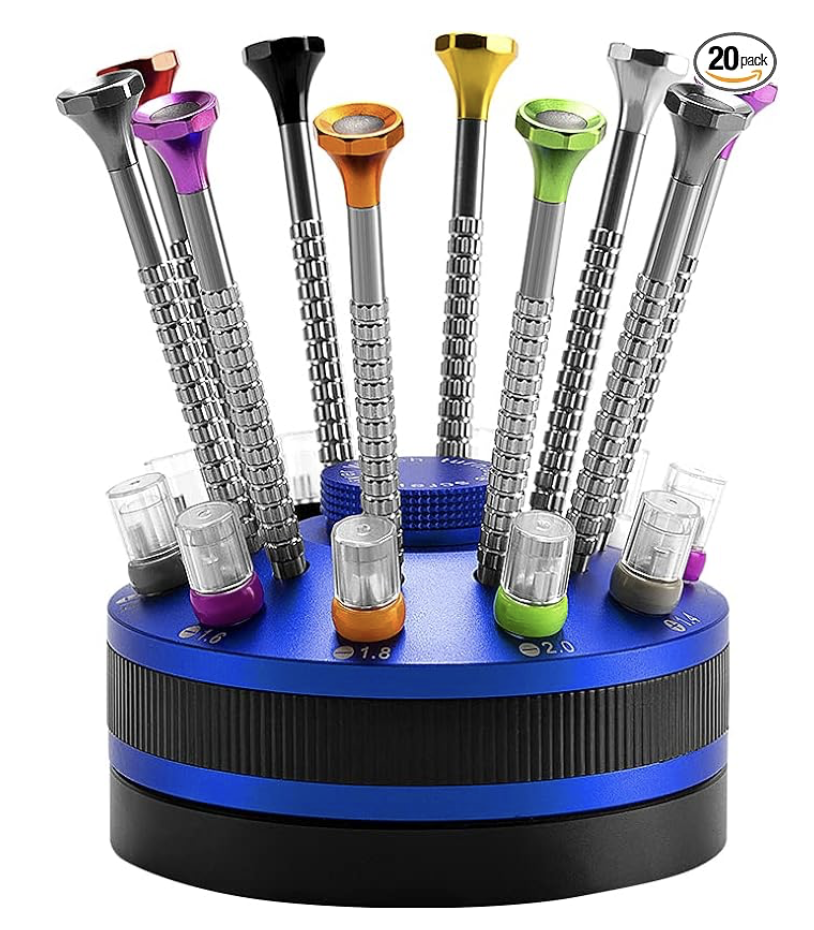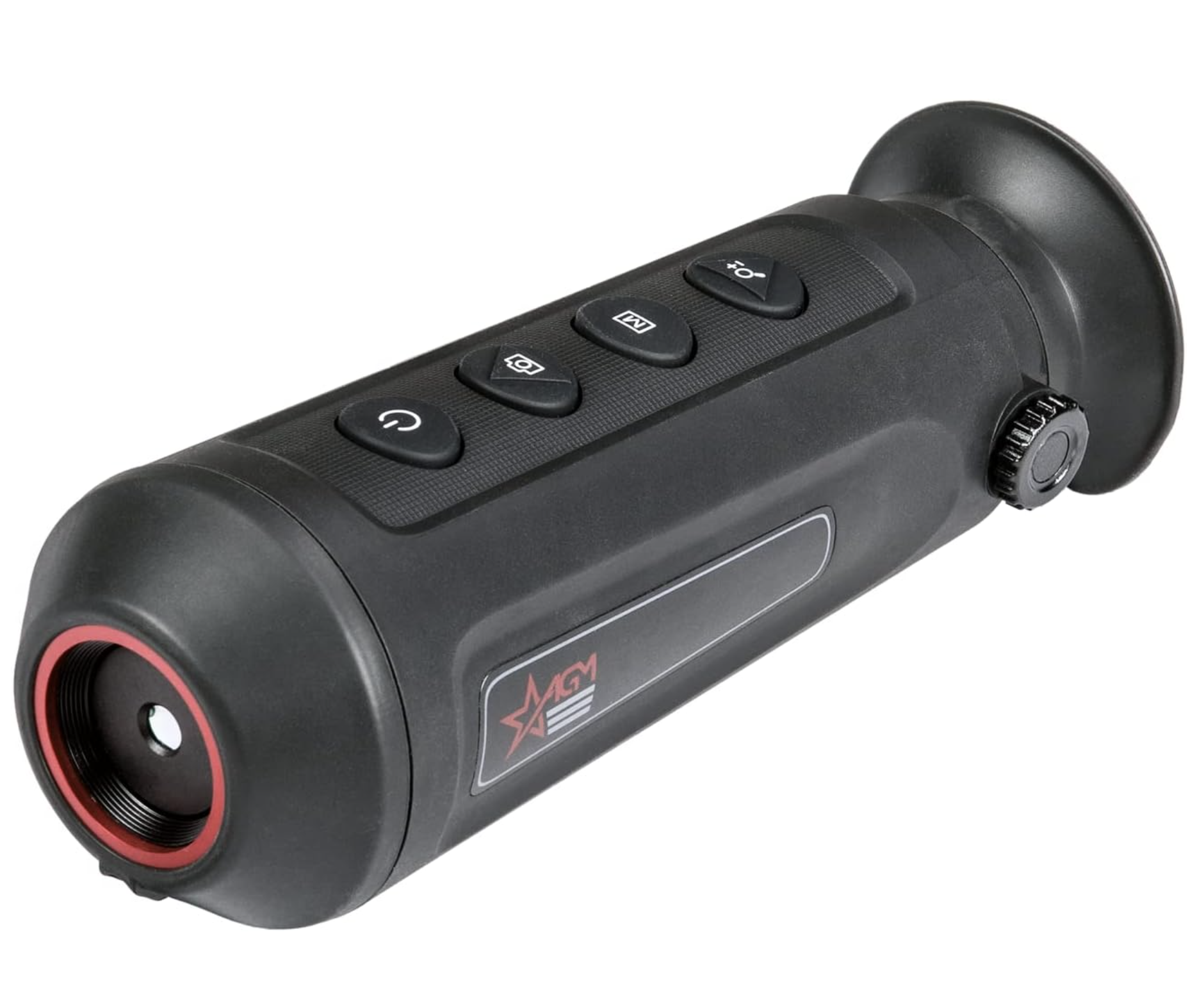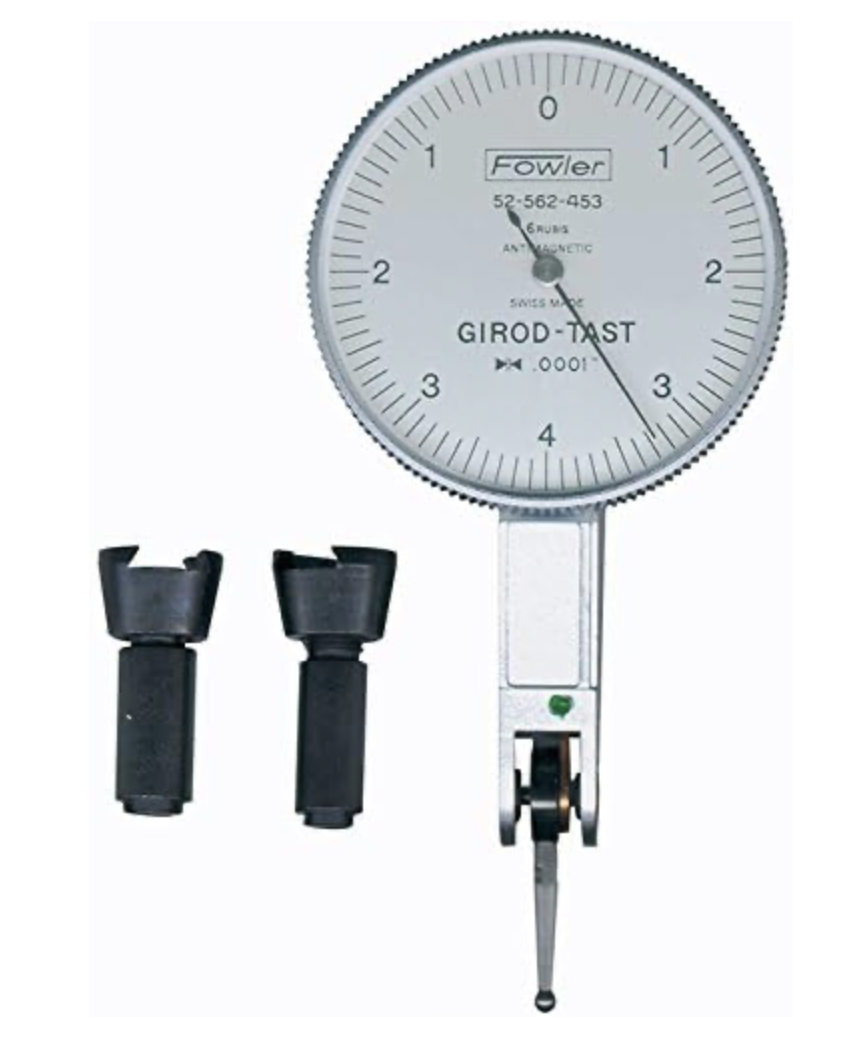HOW TO REPLACE A DIAL INDICATOR CRYSTAL
Aerospace dial indicator: these cheap made-in-China indicators aren't worth fixing, but you can replace the crystal, if you can get hold of one. The thin bezel pries off with a screw driver (put the whole indicator in a vise so you can get leverage) and no tools are required to put a new flat crystal in place. We do not carry these crystals.
Ames dial indicator: a split retaining ring holds the old-style bezel in place. Carefully pry it out and the bezel will lift off. The new crystal is pressed in place from below with considerable force and it's not unlikely that the crystal will be damaged in the process. Use extreme caution. For Series 200 models order the 53.8 mm diameter crystal.
- Back plunger model 22A uses the 40.0 mm diameter crystal which is inserted with a press.
Boice dial indicator (discontinued) bezels are held on with a wire spring. You can pry the bezel off with a large blade screw driver. You'll need a crystal press to insert crystal diameter 53.2 mm on the large bezels and the 39.0 mm diameter crystal on the small bezels.
Brencor dial indicator uses inexpensive Chinese indicators on their chamfer gages. Remove the back cover and you will see a small tab held in place with a screw. Do not remove the screw but loosen it enough to slide the tab inwards, thus releasing the bezel. There is a spring on the opposite side. Be careful you don't lose this. The 54.6 mm diameter crystal needs to be inserted with a press. Reverse the procedure to reassemble.
Brown & Sharpe dial indicator (made in Switzerland): most of these new models have unit bezels and the crystal has to be pried out. Use your ingenuity but be careful not to damage the dial or bend the hand. We don't yet know how best to insert a new crystal nor what the proper sizes are. They snap in place like the Bestest indicators and one assumes that a similar inserting mechanism is used by the manufacturer. Since these gages are inexpensive, in the realm of things, they're considered "throw-aways" by the manufacturer and were not designed for easy servicing.The Group O dial indicators (MW 71 for example) use crystal the 28.6 mm diameter crystal and will require a press for insertion.
Brown & Sharpe dial indicator (made in USA): for the Group 2 indicators which had fiberglass bodies, such as model 599-8241-942, the bezel is held in place with 3 very evident screws. The 54.6 mm diameter crystal needs to be inserted with a press.
CDI dial indicator: the 2-1/4" diameter bezel can be pried off—it rides on a plastic o-ring. The 53.8 mm diameter crystal is inserted with a crystal press. Getting the bezel back on can be a task. It's a tight fit over the o-ring. Make sure the small tab on the inside of the bezel fits into the slot on the dial. Group 3 indicators with 2-3/4" diameter bezels have 3 screws in the side of the bezel which need to be taken out. Don't lose these! You can insert a 66.0 mm diameter crystal with a press.
China dial indicator: The approx. 2-1/4" bezels take he 54.6 mm diameter crystal. Remove the back cover and you'll notice a screw which holds a small sliding tab in position. Loosen this screw just enough to slide the tab back. The bezel will now lift off by pivoting it. Be careful not to lose the small wire spring which is also used to hold the bezel. The crystals we provide are flat and require a crystal press for insertion.
Compac dial indicator Among the several different bezel styles, the large 82 mm diameter bezel unscrews and a new crystal (#1065) is pressed in place. Inserting these large crystals can be problematic. A press is mandatory. For the IAP365A dial bore gage, use 355-032 which is extra thin. A press is also required.
Dorsey dial indicator: AGD 2 indicators have two springs holding the bezel in place. Remove the back cover and pull the springs back. The bezel will lift off, one side at a time. Be careful you don't lose the springs. The 54.6 mm diameter crystal needs to be inserted with a press. AGD 4 indicators use crystal #47084 which, being oversized, needs a press for insertion and the edge of the crystal may benefit from a little bit of scraping to reduce the diameter. If the crystal lies flat (without a dome) however, it will touch the pointer (which is very delicate). Proceed with utmost caution. 3 hex screws hold the bezel in place.
Federal dial indicator: three small screws in the side of the bezel hold it in place. Don't lose the screws because they are mighty expensive to replace. The newest Federal models have an o-ring. You simply pry the bezel off with the blade of a screw driver. The small Size A bezels have a small slot and you are supposed to be able to depress the bezel spring which you are supposed to see through the slot. Use a very small screwdriver and watch your fingers (danger alert). Large diameter crystals (D,E) may not work with standard crystal presses.
- Federal A1/2Q uses the 28.6 mm diameter crystal (crystal press required)
- Federal B2I uses the 40.0 mm diameter crystal (crystal press required)
- Federal B3Q uses the 40.0 mm diameter crystal (crystal press required)
- Federal "D" indicators use the 65.8 mm diameter crystal (special fixture required for insertion)
John Bull dial indicator: these old AGD 2 models have 4 screws clearly visible on the underside of the bezel rim. When removed, the bezel lifts off easily. Install crystal 55.5 mm with a press. Line up the tab on the outer dial ring with the slot in the bezel when assembling.
Kafer dial indicator: the two tolerance marker rings have to be pried out on the AGD 2 dial indicators. Be careful, if the bezel is plastic you will probably damage it. The crystal can easily be removed and replaced without any tools. For plastic crystal order Kafer #5.2101 and glass crystal order Kafer #5.2102.
Mahr-Federal dial indicator: The newest style indicator has a plastic bezel which pries off like the lid on a coffee cup. You can use a large flat-bladed screw driver to help. You'll notice there's no o-ring but a raised ridge inside the bezel which snaps into the groove on the indicator's body. There may be tolerance markers which can easily be removed if you grab the tabs with jeweler's pliers and pull inwards, towards the center of the bezel. The old crystal snaps out with a bit of force. The new crystal diameter 53.2 mm is inserted with a press, again using considerable force because of the deep recess of the groove. You may be better off just buying a new bezel and crystal assembly in this case. Parts are not available from us.
Mitutoyo dial indicator: the newest models have the letter "S" attached such as 2416S. These have a single unit plastic bezel and crystal which snap on over a rubber o-ring. The crystal may pop out leading you to believe that it's replaceable. It isn't; but, if you're very careful, you can attempt to glue it back in place although we don't recommend this. See Mitutoyo parts lists for ordering numbers.
Mitutoyo dial indicator: (old models) Getting the bezel off is one of the tricks you need to master. Remove the indicator back and you will see a bent piece of spring wire at one edge. This wire rides in the bezel's groove. You will need to depress this wire to disengage it. At that time, the bezel will lift up revealing another, smaller, similar wire on the other side. These have a habit of getting lost in the process, so be careful. The oldest models had a flat crystal which needs to be inserted with a press so that it becomes domed.
- AGD 1 indicators (with a bezel diameter of about 1-3/4 inches) use 37.8 mm diameter crystal
- AGD 2 indicators (they have a bezel diameter of about 2-1/4 inches) use the 53.8 mm diameter crystal.
- AGD 3 indicators, use 72.4 mm crystals but these are not available from us. The Mitutoyo crystal press shown at the top of this page will not be suitable for AGD 3 indicators. The crystal diameters are too large for this press. We suggest having these professionally installed.
- AGD 4 indicators such as 4802-10 will use crystal 110443 but these are impossible to install without equipment. Crystal 110443 is a Mitutoyo part and is not available on this page. You should have a repair shop install these for you.
Peacock dial indicator: we don't know enough about every Peacock model, but #1364 indicator with a 2-1/4" OD bezel will take a crystal with 52.1 mm diameter. This is not the original manufacturer's crystal, but it'll do in a pinch. It's flat and needs a press for insertion. After insertion it will be slightly domed. Remove the 3 small screws on the side of the bezel (don't lose them - we don't have these parts) and carefully lift the bezel off it's o-ring. The inner dial is more or less permanently staked to the bezel. It will lift off also and could damage the large hand if you don't watch out.
Scherr-Tumico dial indicator (S-T): Some of the bezels have a large hole on the side. You'll find 3 screw heads by rotating the hole. Unscrew all of these and don't lose them! (We don't have these parts.) The 53.8 mm diameter crystal can be inserted with a crystal press.
SPI dial indicator: most SPI dial indicators are made in China. See instructions under "China" above.
Standard Gage dial indicator (Poughkeepsie models only): The newer, but discontinued style AGD2 indicators with ~2-1/4" bezel diameters and two small screws holding the inner dial in place will take the 53.8 mm diameter crystal. These bezels are held in place with a nylon o-ring. Use a large bladed screwdriver to pry the bezel off. A crystal press is needed to insert the crystal. It may be hard to get the bezel to snap back onto the o-ring. Press down firmly and squarely with the palm of your hand.
- The long obsolete D7-20045-B dial indicator for the small Standard bore gage uses crystal #220. This is a Federal indicator and instructions for Federal test indicators apply. You will need a crystal press.
Starrett dial indicator: the old style size 2 dial indicators have a small hole on the side of the bezel. You're supposed to be able to depress the bezel spring, which holds the bezel on, through this hole using a small pin. Crystals will need to be inserted with a crystal press. Good luck to you. If you get it just right it'll work.
- The new style AGD 2 size bezel series 25 snaps on and off. To get it off you'll want to press on one of the three plastic tabs you'll see underneath the bezel. Crystal diameter 53.2 mm or the 53.8 mm diameter crystal will need to be inserted with a crystal press. Either size will fit, but the 53.8 mm diameter crystal will give a higher dome.
- For indicator series 80 (the miniature dial indicator) the bezel can be pried off with a screw driver; If the wire retaining ring becomes distorted in the process, bend it back into shape. You'll need a press to install the new crystal. See parts list.
- Series 81 uses the 40.0 mm diameter crystal
- Series 641 uses the 40.0 mm diameter crystal
- Series 655 uses crystal #840
- Series 656 uses PT06908 (not available from us)
- Series 689 uses the 40.0 mm diameter crystal
- Back-plunger model 196 uses the 36.6 mm diameter crystal. Replacement is similar to the Last Word test indicator (see above).
- Starrett 25-631 uses crystal diameter 53.2 mm (crystal press required)
The oldest Starrett dial indicators, probably 1950's and earlier, had three screws on the side of the bezel. Remove these and don't lose them! The bezel lifts off but you will need a crystal press to insert the new crystal. When reassembling, make sure the small slots in the dial and the underlying spring, line up with the small tab inside the bezel.
- Starrett 25-F1" uses crystal diameter 53.2 mm (crystal press required)
Teclock dial indicator: the blue bezel of Model AI-921N rides on an o-ring and it can be pried off. The flat 53.8 mm diameter crystal needs to be installed with a crystal press. It may be hard to get the bezel to snap back onto the o-ring. Press down firmly and squarely with the palm of your hand. Newer versions of these indicators use he 54.6 mm diameter crystal. Some older versions had a small clamp which you can only see once you remove the back cover. You will have to loosen the screw just enough so that the clamp slides inwards, releasing the bezel. A small wire spring anchors the other side of the bezel. You may lose this spring if you are not cautious. If you need a new crystal for the Teclock indicator, send us the entire gage along with a check for $40 and we'll install the appropriate crystal for you (shipping included). That way you'll know you're getting the correct size. Otherwise, we make no guarantees that what you buy will fit.
